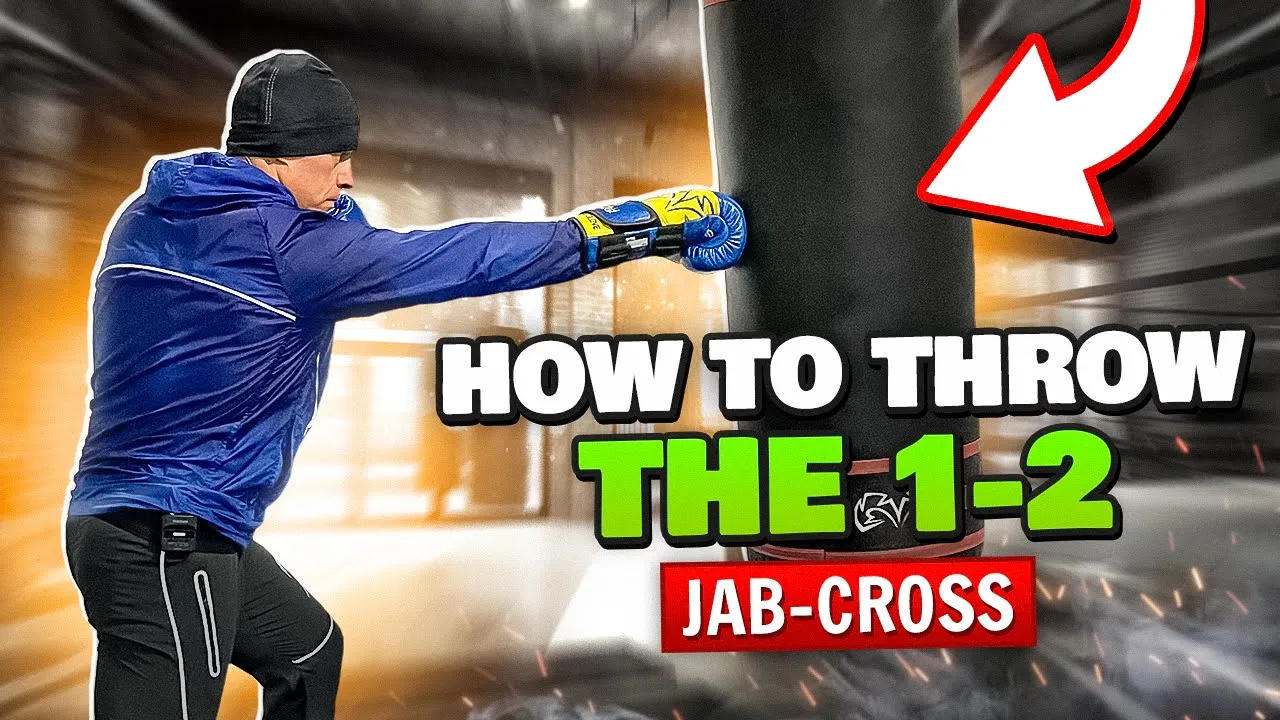All right, what’s going on, boxing enthusiasts? Let’s dive into one of the most crucial and effective combos in boxing—the one-two, also known as the jab-cross. This isn’t just another combo; it’s one of the core techniques that can define your success in the ring. Recently, a coach commented on how years of experience have shown that good conditioning and a solid one-two can win you most fights. Let’s break down the elements that make this combination so powerful. For more combinations and training make sure to check out Level 2 of the Precision Boxing Membership.
The One-Two in Boxing: A Game-Changer
You may have heard it before: “The one-two is one of the most common and effective combos in boxing.” But what makes it so effective? It’s about more than just throwing two punches. It’s about execution, timing, and the strategy behind each move. You need to throw it correctly and understand the factors that contribute to making this combo a fight-winning tool.
Step-by-Step Breakdown of the One-Two
- The Jab (1)
- Execution: The jab is your lead punch. It’s not just about sticking your hand out there; it’s about delivering a quick, sharp, and straight shot. You want to disrupt your opponent’s rhythm and create openings. The jab is your range finder and sets up everything else that follows.
- In the Coach’s Words: “You can get down the technique and the basics of the one-two, and it’s going to be one of your best tools in the ring.”
- The Cross (2)
- Execution: This is where the power comes in. The cross follows the jab, aiming to capitalize on the openings created. You generate power by rotating your hips and shoulders into the punch. The key is to throw it right after the jab, almost like a reflex.
- Coach’s Insight: “When you throw that jab, it’s not just about flicking it out there. You need to come back to your guard and be ready to unleash the cross right behind it.”
Important Factors in Throwing the One-Two
- Conditioning
- The document emphasizes that “good conditioning and a good one-two will win you most fights.” This means you need to be able to throw this combination effectively throughout the entire match, not just in the opening rounds. Endurance and stamina are crucial for maintaining your speed and power.
- “Even a high-level amateur boxer is gonna have to work hard to get to those 4000 punches,” it says. This isn’t just about throwing two punches; it’s about being able to sustain a high work rate with this combination.
- Technique and Timing
- “It’s important to know how to throw it correctly.” Proper technique ensures that you’re not just throwing your arms out there but delivering each punch with purpose and precision.
- Timing is everything. The jab sets the stage, creating an opportunity that you capitalize on with the cross. The faster and more seamlessly you can deliver the cross after the jab, the more effective the combo becomes.
Drills and Practice
The document provides a practical approach to drilling this combo. It suggests that you must work on the one-two in various situations, not just in isolation. Here’s how you can incorporate these insights into your training:
- Shadowboxing with Intent
- Practice the one-two in front of a mirror. Focus on maintaining your guard and delivering each punch with speed and precision.
- “Visualize an opponent,” it suggests. Imagine how your jab disrupts their rhythm and how your cross can exploit the opening.
- Heavy Bag Work
- Emphasize power and accuracy. Throw the jab to set up the cross, ensuring each punch is delivered with proper form and mechanics.
- “Aim to keep the combo tight and effective,” the document advises. Don’t just throw punches for the sake of it—each one should have a purpose.
Avoiding Common Mistakes
- Dropping Your Guard
- After the jab, “come back to your guard” before throwing the cross. This isn’t just about offense; it’s about protecting yourself from counters.
- Overextending
- Avoid the temptation to overcommit on the cross. The document emphasizes maintaining balance and staying ready for follow-up moves or defense.
- Telegraphing Your Punches
- Keep your movements fluid and relaxed. The one-two should be quick and sharp, without any telltale signs that give away your intentions.
Conclusion
The one-two is more than just a basic boxing combination—it’s a foundational skill that, when executed correctly, can turn the tide of a fight. This isn’t just about throwing punches; it’s about conditioning, technique, timing, and understanding the strategy behind each move. As emphasized in the document, “good conditioning and a good one-two will win you most fights.” So, get out there, work on your technique, and make the one-two one of your most reliable tools in the ring.

